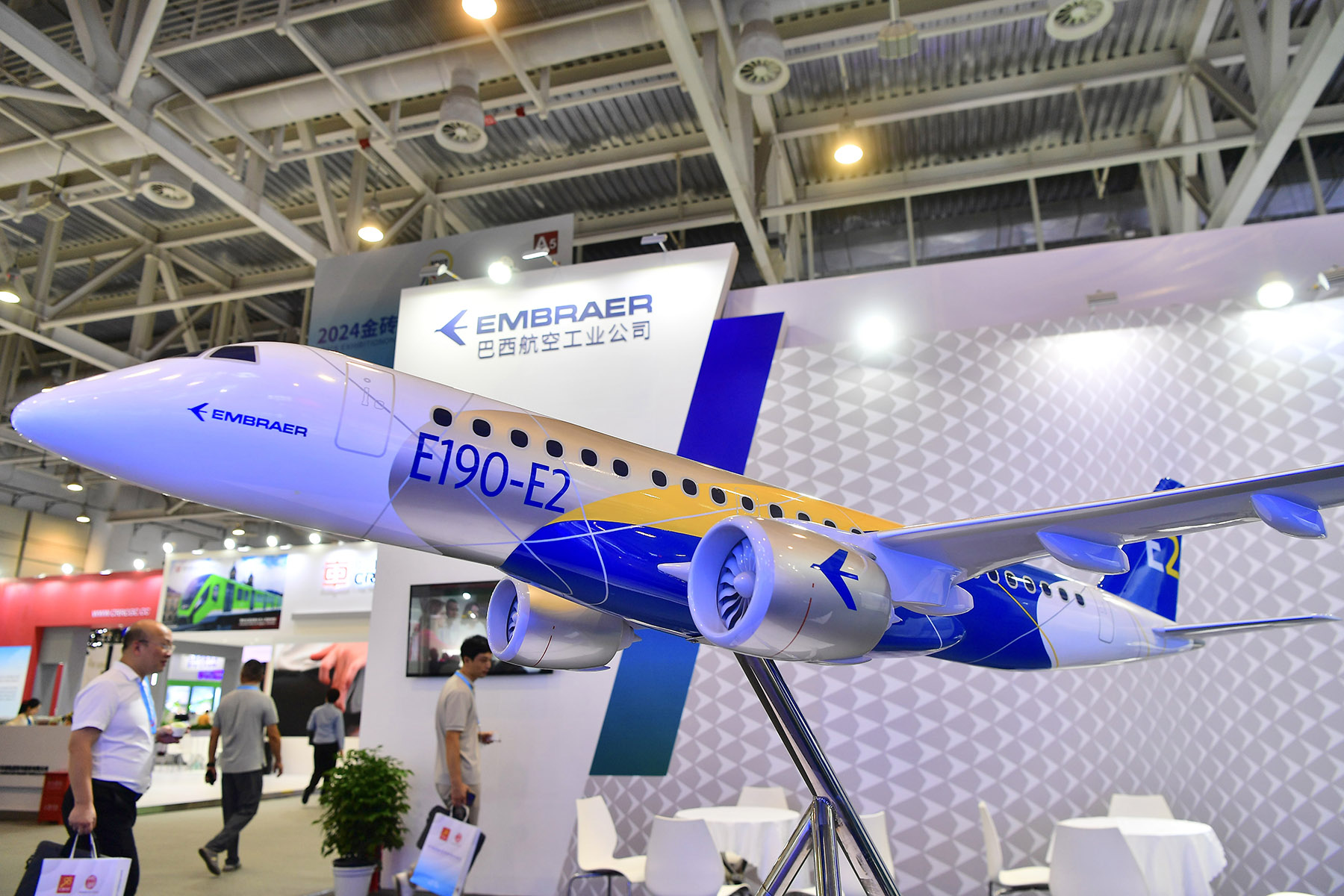
When people talk about Brazil, the first thing that comes to mind is often the country's passion for samba dances and soccer, its vast rainforest and rich variety of natural resources.
Beyond that, Brazil is also home to aircraft manufacturer Embraer, often hailed as the crown jewel of the Brazilian industry, and the company is eyeing the rapidly growing regional aviation market in China's smaller cities to further drive its growth.
READ MORE: Brazilian planemaker Embraer eyes small cities for further expansion
In the next 20 years, China is expected to show a demand of 1,630 aircraft with 150 seats and below, according to the latest market outlook that released by Embraer during the just concluded 15th China International Aviation and Aerospace Exhibition in Zhuhai, Guangdong province.
"For China, constructing an air transport system that links trunk and regional routes, and that connects urban and remote centers requires the introduction of right-sized aircraft to optimize the network structure. Smaller-sized jets are key to establishing network connectivity on a larger scale," Martyn Holmes, chief commercial officer of Embraer Commercial Aviation, said in Zhuhai during the airshow.
"The ability of regional hubs to provide high-frequency flights connecting more cities and to improve service quality will attract greater numbers of passengers," Holmes said.
Currently, the Brazilian manufacturer operates about 80 aircraft in China. Those aircraft connect small and medium-sized airports, facilitating travel in the regional market.
A growing number of regional airports in second and third-tier Chinese cities are seeing more passenger traffic, with annual passenger throughput reaching historic highs last year.
Last year, the annual passenger throughput of Xiliinhot Airport, an airport in Inner Mongolia autonomous region, was over 1 million. And passenger throughput at Altay Xuedu Airport, a regional airport in Xinjiang Uygur autonomous region topped 500,000, data from the airports showed.
"Compared with Europe and the United States, the number of Chinese airlines that focus on developing business in the regional market is not much, and many carriers compete in the competitive trunk market. It is suggested that more regional carriers could give full play to their advantages and develop more regional routes," said Li Guijin, a professor at the Civil Aviation Management Institute of China, in Beijing.
By 2035, China is expected to become a leader in civil aviation transportation, and some 1.5 billion passenger trips will be handled annually, the Civil Aviation Administration of China projected.
Despite China and Brazil are located at the opposite ends of the earth, the two countries have enjoyed friendly exchanges for half a century since they established diplomatic relations in 1974.
ALSO READ: LatAm fertile ground for Chinese companies
Back to the year of 2000, China's civil aviation market began to develop rapidly, and a number of domestic airlines saw potential of the regional aviation market and began to introduce regional aircraft.
In 2000, Sichuan Airlines signed an order with Embraer for five ERJ145 regional jets. It was the first airline in China and the Asia-Pacific region to operate the aircraft model.
In 2003, Embraer and a Chinese company jointly established a factory to manufacture the ERJ145 in China, and it was the first time that China entered a joint venture with a foreign civil aircraft manufacturer to produce airplanes.
The cooperation between China and Brazil was referred to as a model of South-South cooperation in the field of high-end manufacturing, Embraer said.


